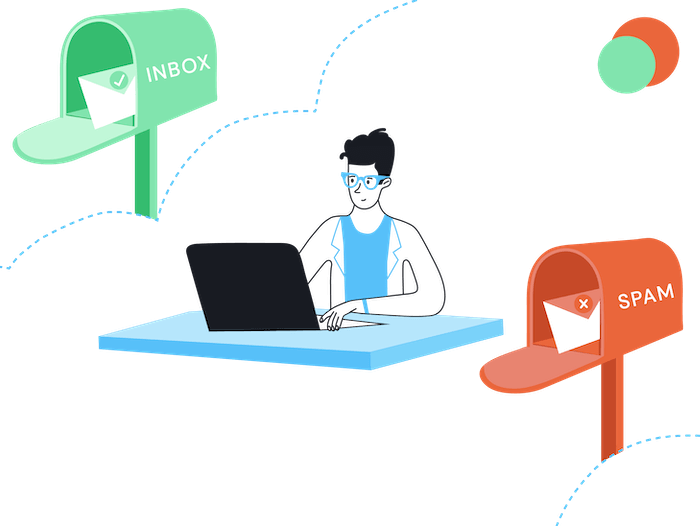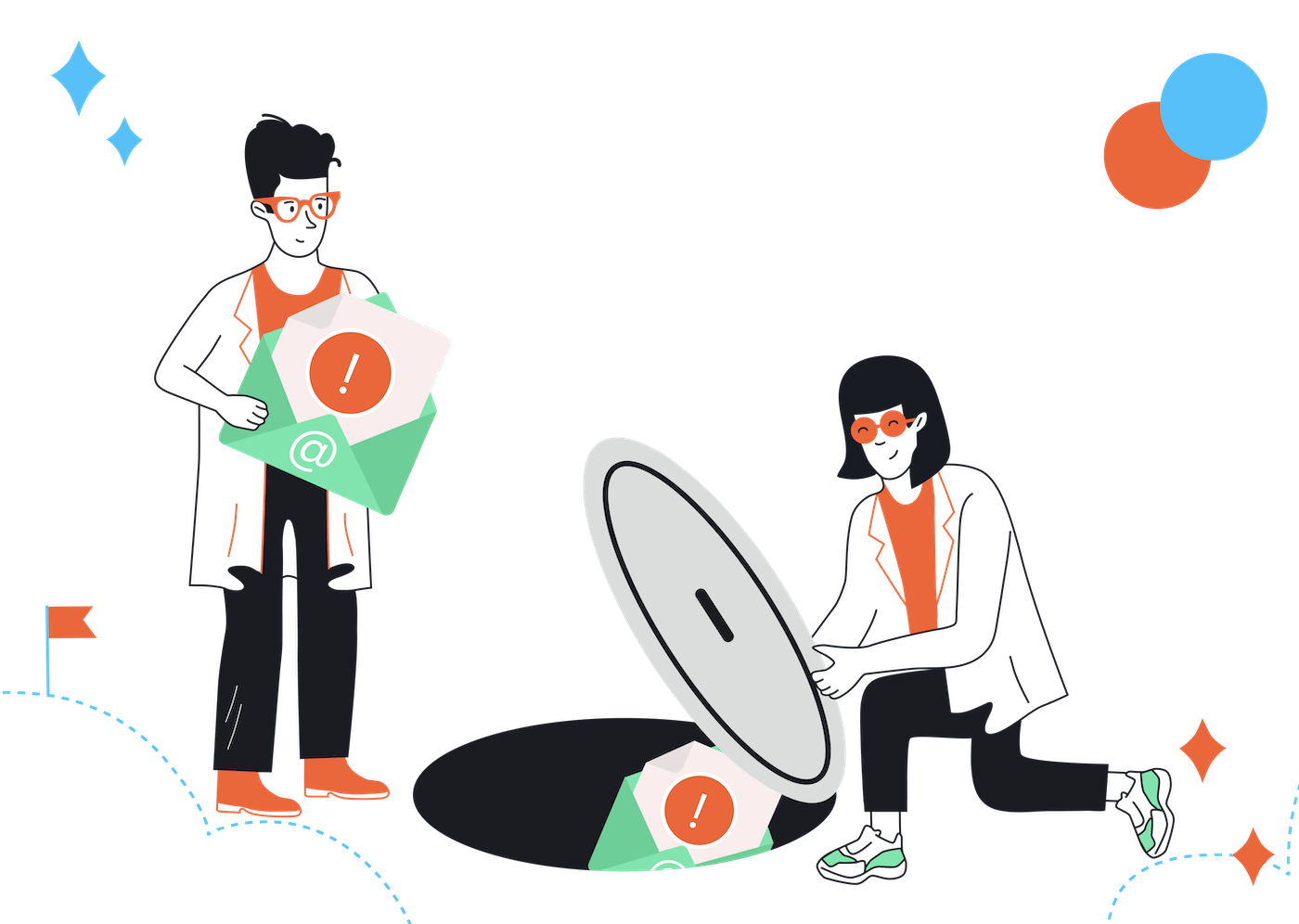Starting May 5, 2025, Outlook.com and Hotmail will enforce similar requirements for high-volume senders (those sending over 5,000 emails a day). As long as you're following Gmail and Yahoo’s rules — including properly setting up SPF, DKIM, and DMARC — you'll be in good shape.
Also, make sure your “From” and “Reply-To” addresses are valid and can receive replies — Microsoft will expect them to be legit. It's the final call to ditch any noreply@ email addresses.
If your business sends a lot of emails, whether for transactional or marketing purposes, you might be concerned about the email rules from Gmail and Yahoo Mail that were introduced in February 2024.
These rules aim to protect people's inboxes from spam and unwanted emails, by making senders take a few extra steps before they send their campaigns.
The good news is that most of these requirements aren't actually new; they're existing best practices that many marketers already follow. So, if you're doing email marketing right, you can rest easy!
But if you're not sure whether you're following these rules correctly, don't worry. We've created this guide to help you understand everything and ensure that you're taking the necessary steps. We'll also let you know what each email marketing service is doing, or not doing, to assist marketers in meeting these new requirements.
What are Gmail and Yahoo Mail’s Changes in a Nutshell?
Gmail and Yahoo Mail’s updated requirements determine whether your emails reach Gmail and Yahoo Mail users. Here's a breakdown of the key areas they focus on:
- Authentication: Senders now need to set up SPF, DKIM, and DMARC authentication for their emails.
- Unsubscribes: Senders must provide a one-click unsubscribe option in their email headers. Plus, they need to process unsubscribe requests within two days. It's all about making it easy for recipients to opt out if they choose to.
- Spam Complaints: Senders should aim for a low spam complaint rate, ideally less than 0.3%. This means people shouldn't report your emails as spam frequently.
These changes mainly apply to senders who send emails to more than 5,000 Gmail and Yahoo addresses in a day. But some Gmail users might not have “@gmail” or “@googlemail” in their email addresses, especially if they use Google Workspace, meaning it can be difficult to tell whether someone is a Gmail user or not.
So, it's a good idea to follow these rules if you have several thousand subscribers in your list, regardless of the types of email addresses on it. This will help your emails have the best chance of reaching their intended recipients.
Step 1: Authenticate your emails
If you're someone who sends a lot of emails, it's important to understand the concept of email authentication. Email authentication involves implementing a series of security measures to reassure services like Gmail and Yahoo Mail that the emails sent to users' inboxes are genuinely from the sources they claim to represent (that is, you!).
This not only enhances email security, but also increases the chances of your emails landing in the inbox instead of the spam folder.
Ever since their new requirements were introduced, Gmail and Yahoo Mail now check that you have the following authentication methods set up:
1. Sender Policy Framework (SPF): SPF is a list of approved senders for your domain (e.g., yourcompany.com). It tells recipients’ inbound email servers (in this case, Gmail and Yahoo Mail) which outbound servers are allowed to send emails on your behalf, helping to prevent your emails from being marked as suspicious.
For example, if you’re sending emails through an ESP like Mailchimp, you’d need to add Mailchimp’s servers to your list of approved senders.
2. DomainKeys Identified Mail (DKIM): DKIM adds an extra layer of security. It attaches a private digital signature to each email, confirming that it was sent by your domain. If the signature does not match with the public record, or if the message has been tampered with, the email will be more likely to be marked as spam.
3. Domain-based Message Authentication, Reporting, and Conformance (DMARC): DMARC is the most secure form of email authentication. It guides Gmail and Yahoo Mail’s servers on how to handle emails that fail SPF and DKIM checks (for example, whether to reject or quarantine them in the spam folder).
To do this, you’ll need to publish a DMARC record for your domain. This will help to ensure that your legitimate emails reach their destination while protecting against spoofing (i.e. someone pretending to be you).
It’s also important to make sure that you don’t use email addresses on Gmail or Yahoo Mail’s domains (e.g. @gmail.com or @yahoo.com) to send bulk emails, as these will end up in the spam folder.
If you need more information on how to set up any of these methods, check out our complete email authentication guide.
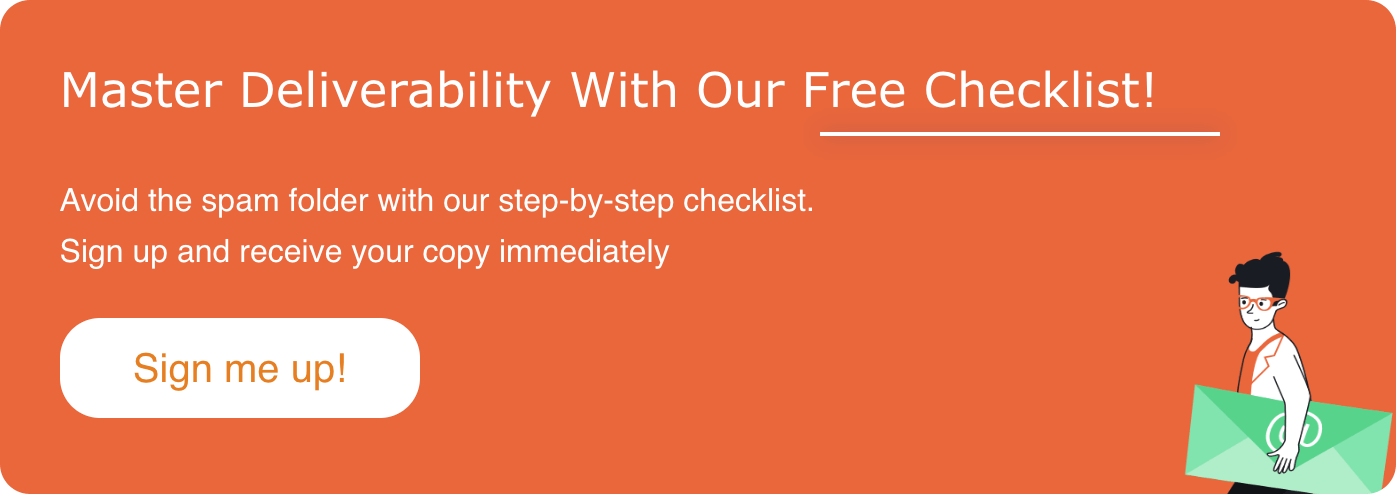
Step 2: Make it easy for users to unsubscribe
Receiving unwanted email is something nobody enjoys, whether it's from a subscription we once opted into but no longer find useful, or from sources we can't even recall signing up for.
In the past, some companies made it challenging for recipients to unsubscribe, but Gmail and Yahoo Mail's changes don't allow such practices anymore.
As a sender, you’ll need to make sure that you:
1. Allow for one-click unsubscribes: This means including an unsubscribe link from your email header (called the List-Unsubscribe Header) that will allow recipients to unsubscribe with one click. Some email marketing platforms insert these automatically, while others require you to add them manually (Google provides instructions on how to do that here). 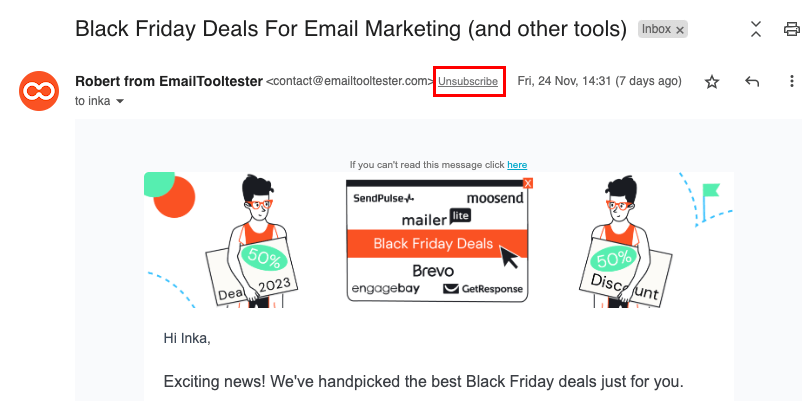
An example of an email with the list-unsubscribe header activated
If you use the Mailto method for generating your list-unsubscribe method, you’ll need to make sure that the unsubscribe requests that get emailed to you are honored (Brevo provides a useful guide about that here.)
You should also add a prominent Unsubscribe link in the message body. Users can be taken to a landing page to confirm they want to unsubscribe, but they shouldn’t be forced to enter additional details (such as their email address), re-confirm the unsubscribe with an extra email, or to provide feedback as to why they want to unsubscribe.
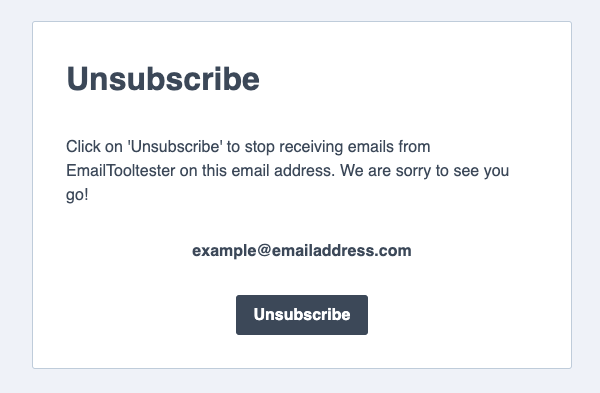
If your unsubscribe link goes to a landing page, make it as easy as possible for contacts to unsubscribe by auto-inserting their email address, and enabling unsubscribes with a single button click
2. Process unsubscribe requests in 2 days: Although current CAN-SPAM requirements allow for up to 10 days to process unsubscribe requests (and GDPR an even longer 30 days), Gmail now require these to be processed in a maximum of 2 days.
That means that ESPs now have a much shorter time frame to update their suppression lists (although many do this automatically anyway). If you’re processing unsubscribes manually (for example, from your list-unsubscribe header), you’ll also have just a narrow window to do this.
Step 3: Keep spam complaint rates below 0.3%
Spam complaint rates measure the percentage of recipients who have marked your email as spam or unwanted.
Gmail and Yahoo Mail’s new requirements penalize those with spam rates over 0.3%, negatively impacting your sender reputation and deliverability, and causing your emails to land in recipients' spam folders or even get blocked.

The spam complaint rate, as shown in ActiveCampaign
To keep spam rates low, it all comes down to following best practices, and offering content that people actually want to read. The main steps to follow are:
1. Email only to people who want to receive emails: This not only involves gaining subscribers’ permission to email them, but also proactively managing and scrubbing lists to make sure you remove subscribers who aren’t engaging with your emails.
2. Offering quality content: Avoid sending content that’s too promotional, and instead focus on writing content that delivers value. Also make sure to avoid using spam trigger words in the email subject line, as users might automatically flag these as spam without even checking the email content.
3. Use segmentation: By sending targeted emails to smaller segments of subscribers based on their interests and characteristics – rather than the same generic email to your entire list – you’ll have a much better chance of keeping spam complaint rates low.
4. Don’t send too many emails: As a subscriber, there’s nothing worse than being bombarded with emails from the same sender, day after day. Keep a consistent sending schedule that hits your audience at just the right frequency. Better yet, use a preference center to ask subscribers how often they want to receive email.
How are email marketing services assisting marketers with these changes?
Feeling a bit nervous about whether your email marketing tool can handle these changes? No worries! We've put together a quick rundown of what some popular platforms are up to, so you can keep on Gmail and Yahoo Mail's good side:
| Authentication | Unsubscribes | Spam complaints | |
|---|---|---|---|
| ActiveCampaign |
|
|
|
| MailerLite |
|
|
|
| GetResponse |
|
|
|
| Brevo |
|
|
|
| Mailchimp |
|
|
|
| Omnisend |
|
|
|
Gmail and Yahoo Mail Changes: Conclusion
It’s easy to feel a bit daunted by the prospect of adapting to Gmail and Yahoo Mail's new requirements. But these changes are here to ensure your emails are not only safe but also reaching the inboxes of people who genuinely want to hear from you. In the end, they benefit both you, and your subscribers.
Most of these changes are merely reinforcing the good email marketing practices you're likely already following. It's all about transparency, security, and providing content that resonates with your audience.
But sometimes, a helping hand can make all the difference. If you ever find yourself in need of some guidance or want to ensure your email game is top-notch, don't hesitate to reach out.
Leave a comment below or get in touch to learn more about our email authentication service. We're here to support your email marketing journey every step of the way!
Learn more about Gmail and how to prevent your emails from being clipped.
We keep our content up to date
03 Apr 2025 – Microsoft introduces similar standards
Our Methodology
This article has been written and researched following our EmailTooltester methodology.
Our Methodology



